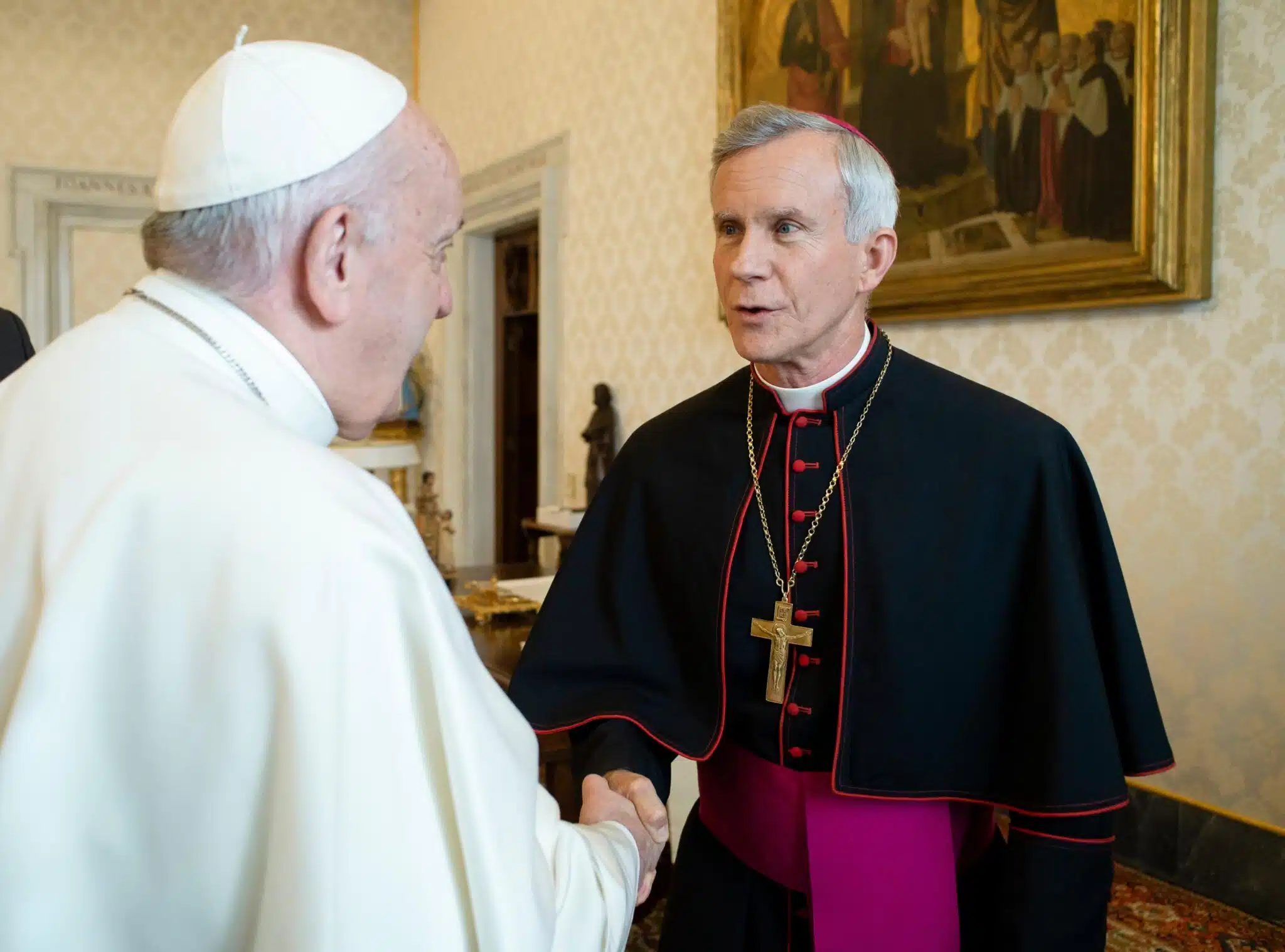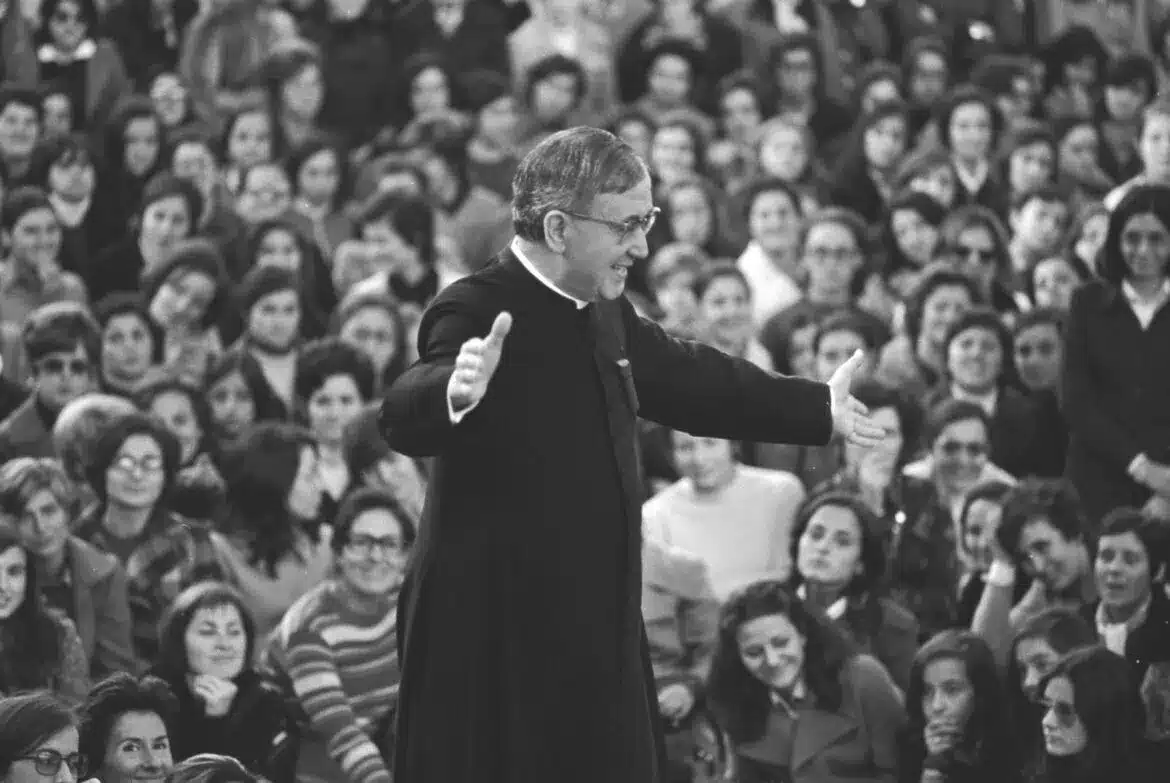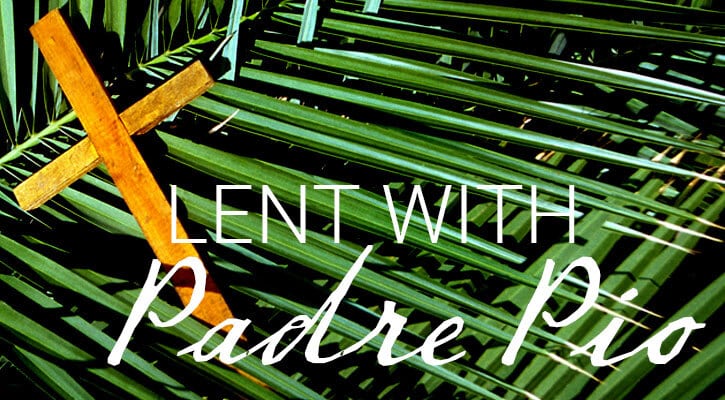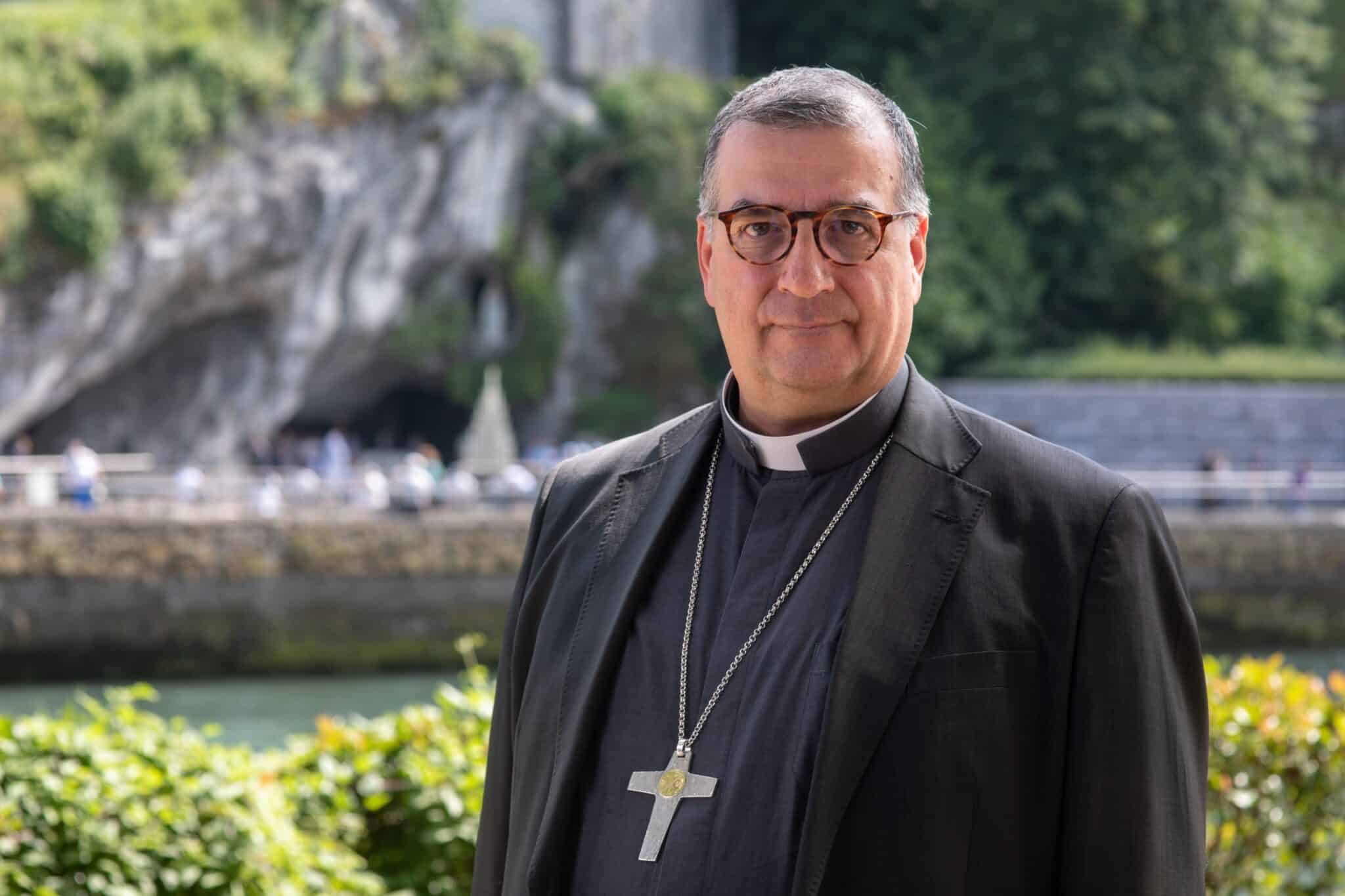(OSV News) — Pope Francis has “relieved” Bishop Joseph E. Strickland from the pastoral governance of the Diocese of Tyler, Texas, the Holy See Press Office announced Nov. 11. Simultaneously, Francis has appointed Bishop Joe S. Vásquez of Austin as apostolic administrator to oversee the diocese until a new bishop is appointed.
No reason was given for Bishop Strickland’s removal, although speculation about his future in the diocese has swirled for months following the bishop’s May 12 post on Twitter (now known as X), accusing the pontiff of “undermining the deposit of faith.”
The pope’s decision followed an address given by Bishop Strickland at an Oct. 31 public gathering in Rome, where he read from a lengthy letter, attributed to a “dear friend,” that accused Pope Francis (among other things) of being a “usurper of Peter’s chair.” Later, the bishop opined himself that Pope Francis was supporting an “attack on the sacred” coming out of the Vatican.
The speculation about Bishop Strickland’s future was accelerated by a June 19-24 apostolic visitation of the Diocese of Tyler conducted by retired Bishop Gerald F. Kicanas of Tucson, Arizona, and Bishop Dennis J. Sullivan of Camden, New Jersey.
On Nov. 11, Cardinal Daniel N. DiNardo of Galveston-Houston released a public statement on the bishop’s removal, explaining that after the apostolic visitation of the Tyler Diocese took place — which he described as “an exhaustive inquiry into all aspects of the governance and leadership of the Diocese of Tyler by its Ordinary” — it was recommended “the continuation in office of Bishop Strickland was not feasible.”
“After months of careful consideration by the Dicastery for Bishops and the Holy Father, the decision was reached that the resignation of Bishop Strickland should be requested,” Cardinal DiNardo said in his statement. “Having been presented with that request on November 9, 2023, Bishop Strickland declined to resign from office. Thereafter, on November 11, 2023, the Holy Father removed Bishop Strickland from the Office of Bishop of Tyler.”
“Let us keep Bishop Strickland, the clergy and faithful of the Diocese of Tyler, and Bishop Vasquez in our prayers,” Cardinal DiNardo concluded.
OSV News was told by Elizabeth Staten, communications director for the Diocese of Tyler, that Bishop Strickland is “not available for comment at this time.”
Bishop Strickland had himself indicated previously that he would not resign willingly from office. The Pillar reported in September that Bishop Strickland’s removal had been recommended to the Holy Father following the apostolic visitation.
In a Sept. 20 blog post on his website, bishopstrickland.com, the bishop addressed rumors of an impending resignation, saying to resign “would be me abandoning the flock that I was given charge of by Pope Benedict XVI.” However, he said that he would respect Pope Francis’ authority if the pontiff removed him from the diocese.
Many had connected the apostolic visitation to Bishop Strickland’s vocal criticisms of Pope Francis and other church prelates, especially on X, where he has around 153,900 followers.
The bishop himself likened the apostolic visitation to “being called to the principal’s office.” In July, he said on his weekly radio show, “The Bishop Strickland Hour,” that he believed the apostolic visitation was initiated “because I’ve been bold enough, I love the Lord enough and his church to simply keep preaching the truth.”
At the same time, he acknowledged that in the diocese “there have been some administrative issues, and I’m sure people are concerned.” Overall, he said, “the diocese is really in good shape.”
Bishop Strickland’s public opposition to Pope Francis seemed to increase substantially with the Synod of Bishops the pope had called to discuss synodality in the Catholic Church along the themes of “communion, participation and mission.” The first session of that synod took place in October; the second is scheduled for next year.
Bishop Strickland charged the synod would instead lead to further confusion and division in the church. From Sept. 5 to Oct. 17, Bishop Strickland published seven pastoral letters on various topics, including the nature of the church and of humanity, the Eucharist, matrimony and holy orders, human love in the divine plan and the error of universalism. In his final pastoral letter, he urged the faithful to “lift high the cross.”
The Oct. 31 Rome Life Forum, sponsored by LifeSiteNews, was billed as a “two-day strategy conference … held immediately after the Vatican’s Synod on Synodality which threatens to formalize heretical teachings on the family.” Organizers said the event was meant to “focus on confronting the evils of the Deep Church and Deep State and their involvement in the Great Reset agenda.”
Bishop Strickland gave a 46-minute public address, which included him reading at length from a letter he said was written to him by an unnamed “dear friend.” This letter accused Pope Francis of being “an expert at producing cowards by preaching dialogue and openness in a welcoming spirit and by highlighting always his own authority.”
The letter outright attacked Pope Francis’ validity as the successor of St. Peter, claiming he had ousted his predecessor, the late-Benedict XVI (who denied such allegations): “Would you now allow this one, who has pushed aside the true pope and has attempted to sit on a chair that is not his, define what the church is to be?”
Bishop Strickland said the letter’s words were “challenging” but did not dispute the allegations.
Bishop Strickland himself said in his address that “one of the most frustrating things coming out of the Vatican, and it’s supported at least by Pope Francis, is the attack on the sacred.”
Nine days later, Pope Francis asked for his resignation, before finally removing him Nov. 11.
Bishop Strickland did not mention his removal when posting to social media, but on Nov. 11 posted a message on X urging followers to “rejoice always that…no matter what the day brings Jesus Christ is the Way, the Truth and the Life, yesterday, today and forever.”
Bishop Strickland, 65, was ordained to the priesthood for the Diocese of Dallas in 1985. He ministered in the northeast Texas diocese since its founding in 1987 and led the diocese since his ordination as bishop in 2012.
In 2017, Bishop Strickland issued “A Teaching Diocese: Constitution on Teaching the Catholic Faith,” which outlined a new catechetical structure for the Diocese of Tyler and established the St. Philip Institute of Catechesis and Evangelization, over which he serves as president.
Bishop Strickland has also supported the formation of Veritatis Splendor, an independent, lay-run Catholic community in his diocese with a residential development near Winona, Texas and named for Pope John Paul II’s 1993 encyclical. In a March 2021 message posted to his blog, Bishop Strickland called the initiative “an inspiration of lay Catholics seeking a community where their families can flourish in Jesus Christ.” Months later, the project was marred by scandal as its executive director stepped down over her adulterous relationship with a Texas pro-life leader.
Bishop Strickland’s public profile started growing in 2018 after he issued a notice on the diocese’s website saying he found the accusations made by Archbishop Carlo Maria Viganò implicating Pope Francis and other prelates in the scandals of then-cardinal Theodore McCarrick (whom Pope Francis laicized in 2019) were “credible.” The post (removed from the website but archived on the internet) directed his priests to read the notice at Mass and post on their websites and social media.
While the bishop was celebrated for his outspokenness by many in the pro-life movement, during the COVID-19 pandemic, he criticized the Vatican’s moral defense of the available vaccines, which in turn had relied upon studies and guidelines established under Pope Francis’ predecessors.
Bishop Strickland’s controversial persona eventually led to profiles in The New York Times and Esquire, the latter calling him a “‘Red-Pilled’ Bishop … Beefing With the Pope,” a reference to a tweet in which the bishop likened himself to Neo in “The Matrix,” who in the film took the “red pill” in order to unplug from the Matrix and experience reality. “I’ve seen the truth,” he explained in a 2019 interview with the National Catholic Register.
The Diocese of Tyler posted Nov. 11 a notice of the transition from Bishop Strickland to Bishop Vásquez as apostolic administrator, adding, “Our work as the Catholic Church in northeast Texas continues.”
“Our mission is to share the Gospel of Jesus Christ, to foster an authentic Christian community, and to serve the needs of all people with compassion and love,” it stated. “We strive to deepen our faith, promote the common good, and create a welcoming environment for all to encounter the loving God — Father, Son, and Spirit.”
By Maria Wiering, Peter Jesserer Smith | OSV News








1 thought on “Bishop Strickland removed from diocese after accusing pope of backing ‘attack on the sacred’ ”
The whole thing sounds kind of confusing to me and I still don’t know exactly what is going on. Something is missing from the whole story. It doesn’t make sense.
Comments are closed.